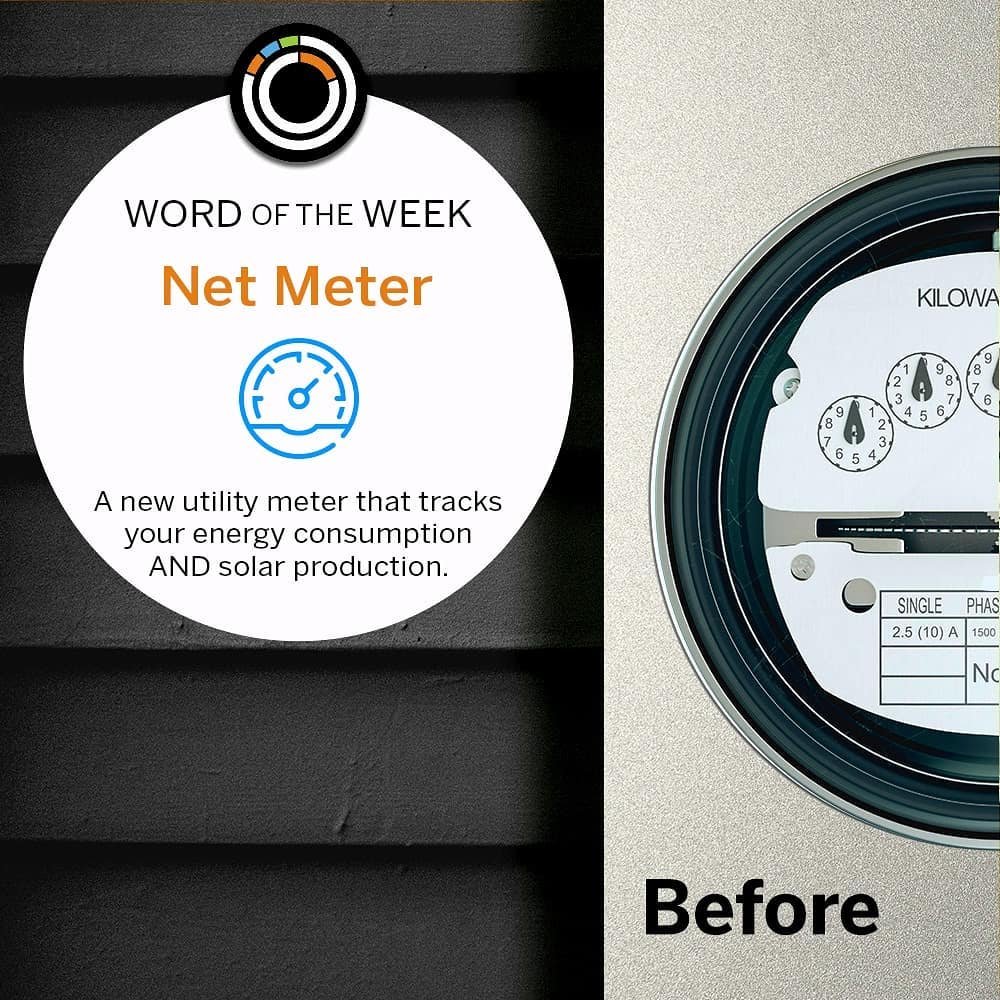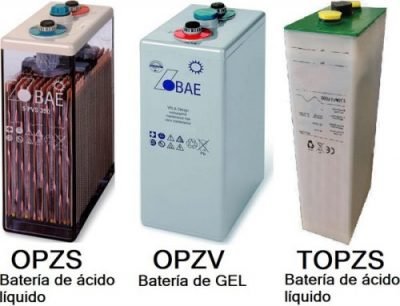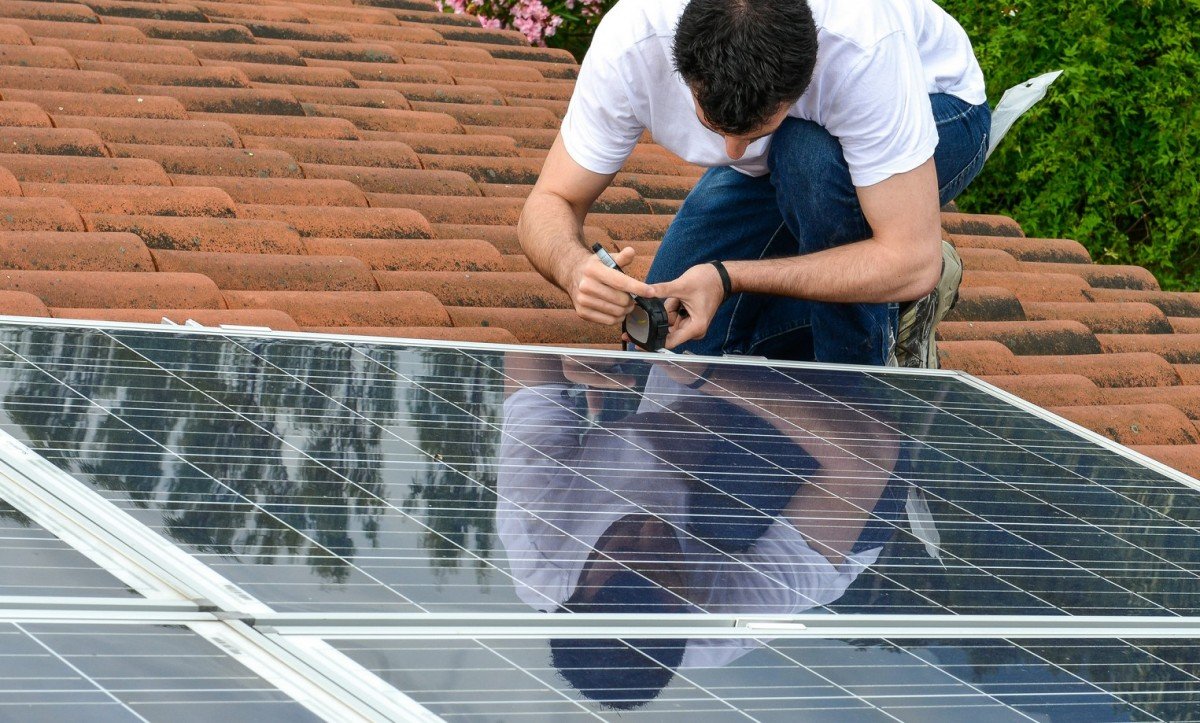
Solar air conditioning: types and operation
Air conditioners are devices that consume a lot of energy, therefore alternatives must be sought to reduce the cost of the electric bill and one of them is to make the air conditioner work with solar panels.
Solar air conditioning: types and operation
Solar air conditioning can save a lot of electricity compared to traditional air conditioning systems. We show you what it consists of, how it works and the price of the installation.
What is solar air conditioner?
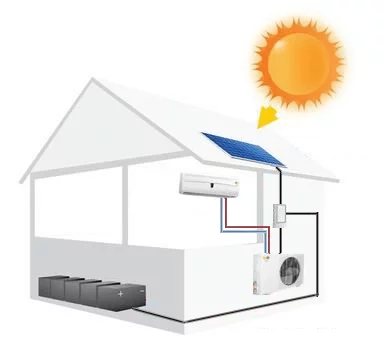
Solar air conditioning is an air conditioning system that draws on sunlight to generate cold. It is paradoxical to think that what causes high temperatures is also the solution to them.
The use of solar energy is a great step to save on bills since the hours in which we use the air conditioning the most coincide with the hours of more sun. In addition, with the repeal of the sun tax in October 2018, it is not necessary to pay taxes on the use of this renewable energy.
There are currently two types of solar air conditioning : the hybrid system, which is based on a traditional air conditioner powered by electricity generated by solar panels , and solar absorption air conditioning, a much newer system based on solar thermal energy.
Hybrid Solar Air Conditioner
Hybrid solar air conditioning consists of the installation of photovoltaic panels to generate the electricity used by the air conditioner. When it’s sunny, the plates collect solar energy and transform it into a direct electrical current, which to be used must pass through a solar inverter that converts it into alternating current, the one used by air conditioners.
This solar panel system is used for any of the types of air conditioning that we know:
- Split air conditioning
- Ducted air conditioning
- Portable air conditioning
The hybrid solar air conditioner can have batteries that serve to accumulate solar energy for periods without exposure to the sun, such as cloudy days or at night. When the solar panels are not capable of generating enough electricity, the air conditioning automatically switches its supply to the conventional electrical network, so the house is never left without air conditioning.
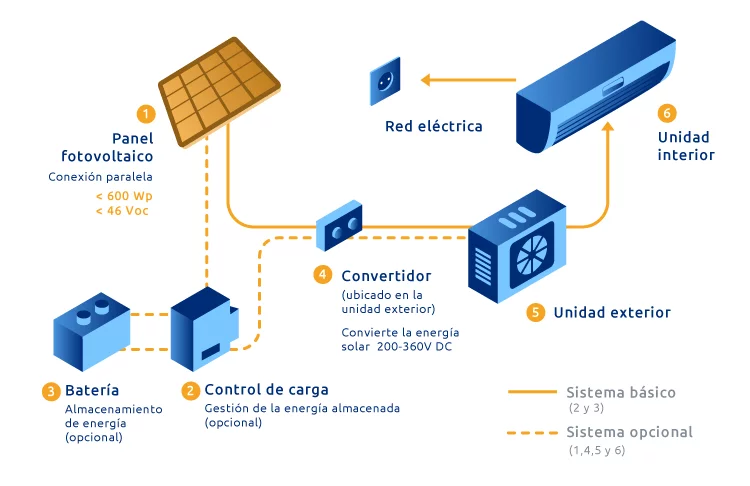
Solar absorption air conditioner
Solar air conditioning by absorption is a cooling system that takes advantage of the change in state and, consequently, in the temperature of different refrigerant liquids. These liquids are ammonia and water. They are natural refrigerants so they leave a near zero carbon footprint.
The solar air conditioner by absorption does not need a compressor , since this is replaced by the absorber unit. While the compressor collects the refrigerant gas and compresses it using electrical energy to increase its heat, the absorption unit uses the sun’s heat to heat that refrigerant.
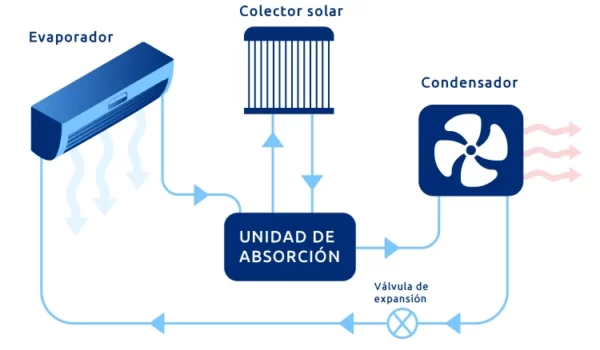
In the absorption unit is the mixture of water and ammonia and that triggers the following process by which cooling is achieved:
- The heat from sunlight causes the ammonia to rise in temperature and evaporate away from the water. This is achieved because ammonia has a much lower boiling point.
- The evaporated ammonia goes through the pipes to a condenser that causes the ammonia to give up heat to the outside and become a liquid.
- The ammonia passes through an expansion valve to decompress and lower its temperature.
- The low-temperature liquid ammonia reaches the evaporator, where it absorbs the room air and evaporates.
- The evaporated ammonia goes to the absorber unit where it is remixed with the water.
Types of solar panels for air conditioning
There are different types of solar panels for air conditioning , which is why it is convenient to know the differences between one and the other in order to choose well. Next, we show the types of solar panels according to the type of cells:
- Monocrystalline solar panels : they are made up of cells with a single crystal, so they have a color, usually blue or black. Its efficiency is around 18-20% and it is quite expensive because its creation is complex.
- Polycrystalline solar panels : they are made up of cells that have several crystals, so they have different shades of blue. Its value for money is very good since its manufacture is simpler and, although it has somewhat less efficiency than monocrystalline, it is quite high (16-18%).
In addition to the cell type, the number of cells on the plates must also be taken into account. This determines the power that the panel, because the greater the number of cells, the more energy it produces:
| number of cells | panel power | Energy (hour) |
|---|---|---|
| 36 cells | 150W | 0,15 kWh |
| 60 cells (12, 24 or 48V) | 270 – 320W | 0,27 – 0,32 kWh |
| 72 cells (24 and 48V) | 330 – 400W | 0,33 – 0,4 kWh |
Installation of a solar air conditioner
The installation of a solar air conditioner must be carried out by an authorized installer , since, like any air conditioning installation, an air conditioning installation requires the handling of the refrigerant gas in addition to the correct placement of both the air conditioner and the plates. solar.
The first thing is to check if we can install the solar panels since we can find municipal regulations or statutes of neighborhood communities that prevent their placement. Although today the autonomous communities are favoring the use of this type of system since they use renewable energy.
The next thing is to contact an installer to advise us on the purchase of solar air conditioning according to the needs of the home, since the power varies depending on the square meters, the quality of the insulation and the difference in temperature that we want with the outside. .
With the data provided by the user, the installer can calculate the frigories of the device and, consequently, the number of solar panels required. There are solar air conditioning kits that already come with the number of panels needed for the device.
Example of calculation of solar panels for air conditioning
The user needs a 3 kW split air conditioner and chooses one with energy efficiency A+ (5.6 SEER). This air would have an electrical consumption of 530 W/h (3,000 W/5.6) for which it would need 2 solar panels of 300 W that can provide a total of 600 W/h.
Solar air conditioning kits with a power of 2 to 3kW are usually priced at around €1,500 to €2,000 . To this we must add the price of the installation of both the air conditioning and the solar panels. So you will always have a price over €3,000.
Advantages of solar air conditioner
Solar air conditioning is an air conditioning system that is being well received in the market due to its contribution to caring for the environment. But apart from this, it has other advantages and disadvantages that we expose below:
| Advantages | Disadvantages |
|---|---|
| Use a renewable energy | on cloudy days |
| savings on bills | High initial investment |
| Can be adapted to other devices | Maintenance of solar panels |
Solar air conditioning has sunlight as its main source of energy, which is clean and renewable energy and contributes to caring for the environment. By using sunlight as energy, the cost of electricity in bills is drastically reduced .
Although they are usually self-sufficient, most solar air conditioning installations have a connection to the electricity grid in case the solar panels are not capable of generating the electricity demanded, as can happen on cloudy days.
The cost of this equipment is usually high, so its amortization is usually high , that is, the time that passes until the savings on bills cover the price of the installation is usually long.

